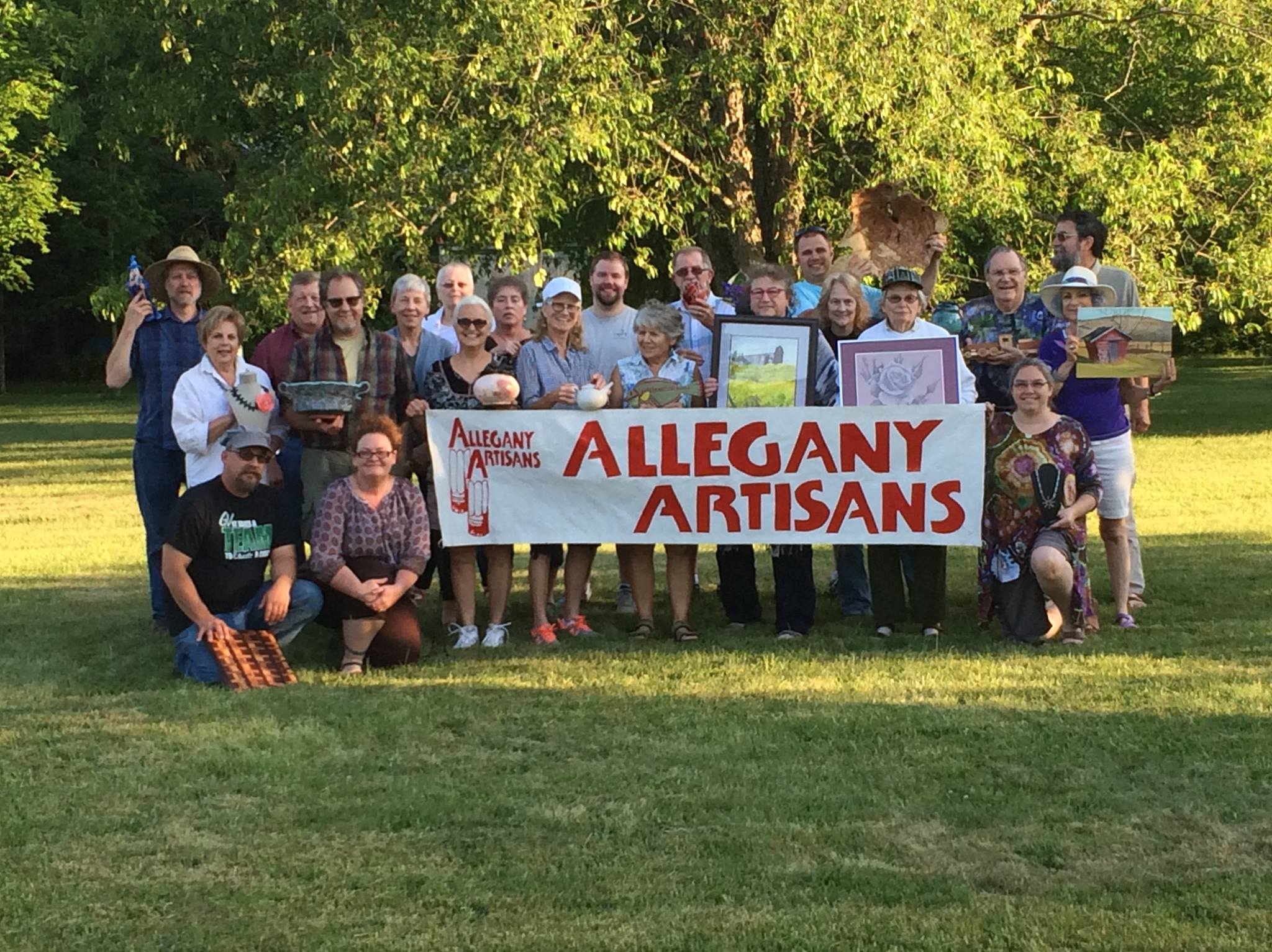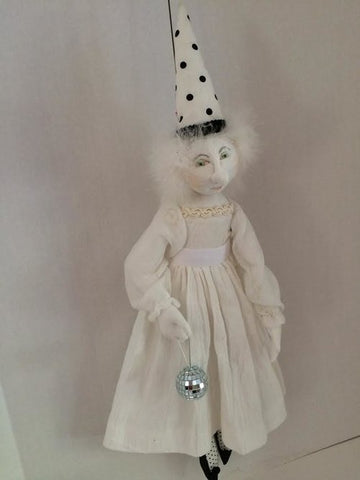- Jewelry
- Crosses
- Rings
- Mens
- Claddagh
- Wedding
- Personalized Jewelry
- John Urban Jewelry
- Sale
- Gift Certificates
- About Us

The Studio Tour is now approaching our 30th year. It seemed like a goofy idea when we first launched it with ten artists and craftsmen in 1988. “Where is it?”, people would ask, because an arts festival is supposed to be in one place.
In 2017 there are 35 studios exhibiting local painting, jewelry, pottery, sculpture, wood working, blacksmithing and fiber arts.

Most of the original Allegany Artisans were fairly young entrepreneurs that were earning a living by selling their creations on the craft fair and arts festival circuit. There was a very can-do, do-it-yourself sense of adventure and pride of self-reliance. It wasn’t easy money by any means. Weather, car troubles, theft and other dangers of the road were always there to be overcome. Any of us might find a good show somewhere and have good sales one year to be either rejected by the jury committee the next year, or maybe rained out.
When people got their minds around the idea of the Studio Tour, they loved it. Watching craftsmen at work and shopping for treasures where the things were actually made. When the first tour was still just in the planning stages, Roger Barnes and I were at the American Craft Council Fair in West Springfield, MA. There were three couples from near Buffalo that were avid craft collectors. They bought some things from Roger and he got them excited enough about the Studio Tour that they reserved rooms at the Angelica Inn to make a weekend of it. Their spending made the show. On Saturday night we were all calling each other, sharing our joy that we had finally cracked the code for making a studio show a success.
Of course a show can’t depend on the spending of just six people. But in hindsight what worked was that sticking it out for several years on the same weekend. Our taste of success on the first year, which was really rather modest, was enough that we knew it could work.

The second year there was 27 studios on the tour. We printed a little booklet with a map and began pooling our mailing lists. Publicity about what we were doing actually caused several people to move to the area. Our low real estate prices were a big draw. We may seem out of the way, but we are within a day’s drive of many of the best festival territories in the US. New York, Philadelphia, Maryland and DC are all about 5 or 6 hours away. The Midwest festivals in Ann Arbor Michigan, Milwaukee, Columbus, OH and some other great opportunities were still a day’s drive.
On the surface the effort of the Studio Tour was marketing, but there was more to it. Even when an artist goes to a festival where there at hundreds of other artists, you are really on your own. We were used to working alone, or maybe with a partner, making the work, getting ready, setting up and manning the booth. People, by their nature have a certain need to be part of a team, to work together and to collaborate. Those who work part time at their art and have another job usually don’t have this sense of loneliness with their vocation. Working together for the promotion of the Studio Tour gave many of us a welcome relief from our isolation.
Another great thing about the Studio Tour was the visibility that it gave us in our own local communities. It was really a sad situation that not only were we not appreciated locally, our art, with its audience far from home, was not contributing to the local culture. As artists who did not have much of an opportunity to show and sell our work locally, many of us were fairly invisible to our neighbors. If they thought about us at all, they probably wondered how we got by. Personally, I had many local people telling me about job opportunities I might pursue. My business meant nothing to them because they could not see it, so the imagined I must really be unemployed or under-employed. The Studio Tour gave our art a local audience. Even people who never actually came to any of the studios would see articles in the newspaper or hear about us on the radio, or even on TV.




In 1992 I bought a Main Street commercial building right in the middle of the Village of Andover. I did this not because I wanted to have a store, but because it was some of the cheapest workspace available. Suddenly having a lot of extra space, several of the other artisans whose real studios were in very out-of-the-way places chose to piggy-back in with me during the Studio Tour. Roger Barnes wound up renting half the ground level of the building for his own woodshop for several years, before he moved to Hawaii. By now most of my sales were coming from print ads in Smithsonian Magazine and several Scottish and Irish interest periodicals. It was still not my plan to have a regular storefront business with a permanent showroom, but people started showing up expecting to see the displays that they had seen during the Tour.
In the fall of 1997 we reworked the façade of our building at One Main Street with cedar siding and partitioned off the space nearest the front door as a small, but permanent, display space and began to advertise regular business hours. Most days we had no showroom customers, but it didn’t really matter, because most of our sales were still mail-order and we still did a few festivals. By this time I can say “we” about my own studio because my wife Sue was working full time as the business manager and there were several other full time employees.
By the late 1990s I think the center of gravity surrounding the Studio Tour had changed. Originally it was customers from out of the area that made most of the sales, but gradually local people became the larger audience. The same is true about the walk-in customers in my showroom. For the first several years most of them had come a long way. As time went on, we still have lots of “destination shoppers” but the majority are local customers.
For the 2003 Studio Tour we did our most ambitious demonstration ever. We invited people to watch the forge welding of a 14 pound billet of mokume-gane. Today Walker Metalsmiths is mainly known for our traditional Celtic jewelry, but for many years we also did mixed metal designs in a much more modern style. The process is noisy and dangerous, so doing a public demonstration took a lot of planning and precaution.

Beginning in 2002 we began an apprenticeship system for new recruits to the craft. The goal is to teach by on-the-job training with exposure to all the skills, techniques and technical knowledge needed to be a practicing designer-craftsman. The ideal term of apprenticeship is full time for four years. The first apprentice was Danielle (Massera) Mora who as well as collaborating on our mokume and Celtic designs also created a line of her own jewelry that she exhibited at her own studio for several years before leaving the area. Danielle is now running her own jewelry business in Southern California.
Jennifer Acomb and Lyndsay Burr also completed a four year apprenticeship with Walker Metalsmiths. Jennifer now works for a jeweler in Rochester while Lyndsay remains an important part of Walker Metalsmiths ten years after starting. Lindsey Thurber and Abram Grossman are the most recent apprentice-graduates, having completed their four year training this summer. Lindsey is also still with us.

In 30 years I went from being a lone craftsman with very little local audience to an established Main Street business with the collaboration of other craftsmen, apprentices and customer service helpers. My daughter Jeanne is now the business manager and our workshop has a renewed buzz of activity and enthusiasm that has a startup feel. Our plans for expansion as a small town Main Street business all began by welcoming people to visit our workshop for one weekend a year during the Allegany Artisans Studio Tour.



Pictures courtesy of Allegany Artisans. Check us out on the web at AlleganyArtisans.com
Comments will be approved before showing up.

Many people don’t understand that this kind of small-town life still exists in America. You might think in stereotypes like Mayberry, but there aren’t really towns like that anymore, are there? Not Mayberry exactly, but yes, something similar and half a century later.

Ai”, has crashed the Celtic Festival, drunk, pushy, and getting in everyone’s face with some of the most obnoxious and un-authentic Celtic art of all time

We have included our favorite tips & tricks to get those improvised engagement photos looking like a professional photographer was hiding in the bushes.
Betsy Orlando
October 08, 2017
Wonderful article, Steve. I remember the early years very well.Glad to still be a part of the Tour.